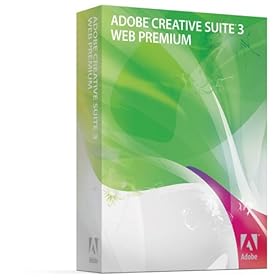Welcome to the second part of our special report. We left off with Apple representative Richard West talking about the importance of color calibration…
Next up was Jonathan Ferman, Business Development Manager, Media & Publishing for Adobe, going through some of the new features of the main applications in CS3. He started off with Bridge, Adobe’s asset management program, which managed to first draw blanks from the audience (a show of hands revealed that although all of the attendees used CS2 or at least a few of its programs, none used Bridge for asset management) and then chuckles when Ferman showed its “completely reworked and improved UI”: everything from functionality to colour scheme seems to have been lifted from Apple’s Aperture (down to the 100% magnification function, a square called Zoom in Bridge, more than reminiscent of the circular Loupe in Aperture). Inside Bridge are some new collaborative features like Version Cue, offering built-in support for workgroups and check-in and check-out functionality when multiple people are working on the same file/project, and Acrobat Connect, a flash-based mini-app that allows onscreen meetings and classes with remote assets-sharing capabilities.
everything from functionality to colour scheme seems to have been lifted from Apple’s Aperture (down to the 100% magnification function, a square called Zoom in Bridge, more than reminiscent of the circular Loupe in Aperture). Inside Bridge are some new collaborative features like Version Cue, offering built-in support for workgroups and check-in and check-out functionality when multiple people are working on the same file/project, and Acrobat Connect, a flash-based mini-app that allows onscreen meetings and classes with remote assets-sharing capabilities.
Photoshop sports faster startup times and a reworked UI. Palettes have now been renamed Panels, and have been made more fluid and easily customizable. Panels work in a way that is similar to browser tabs, movable and switchable around the workspace, and new tools/name/icon views allow saving screen real estate to concentrate on the image and minimize the pixels taken over by the tool switches. A very cool feature is the quick selection tool, an improvement on the lasso tool to cut out elements of an image with stunning precision. The new tool takes into account not only edges, but also colour and even texture: and if that’s still not precise enough for you, a Refine Edge tool brings you into the finest details like hair and fabrics. The ease of use of this features was quite impressive. Perhaps the most interesting feature of all was the auto align pictures: you can now select a bunch of similar pictures, and PS will align them for you based on content, layering them in an onion skin fashion, and allow users to choose the best exposure by deleting or bringing parts of the layers to the front. Stitching panoramas with auto exposure correction via auto blending is also possible, all at a click of one button. 3D and video/audio are now supported, and fully editable, inside PhotoShop. 3D layers, wireframe views, lighting effects, frame by frame editing, music scoring, all in one place and with tight integration with the other programs of the Suite.

Dreamweaver is one of the Macromedia applications Adobe is bundling in CS3, and is now fully compatible and integrated with Photoshop. It boasts even better tools to check browser compatibility issues (offering solutions through a community-driven website) and CSS stylesheet manipulation, with presets for outputting the same content for web, print, and mobile devices alike. In particular, users are able to preview how their work will look on different handeld decives through Device Central, a fully featured emulator with a list of the latest phones from the main manufacturers (which Adobe promises to update regularly). From screen size to processor simulation, no detail is left off to replicate the user experience on different devices. And developing for different platforms is just a matter of clicking a button, Dreamweaver will do it automatically for you, adapting the content to your choice of device.
 Sony is rolling out firmware 1.80 for its PlayStation 3
Sony is rolling out firmware 1.80 for its PlayStation 3. This latest update will add resolution upscaling capability for PlayStation and PlayStation 2 titles, as well as bring DVD playback to full 1080p resolution when viewed on compatible HDTVs. Further enhancements include Remote Play functionality for the PlayStation Portable (PSP)
, which allows users to access their PlayStation 3 consoles remotely from its portable little brother using any available wireless connection. Moreover, Sony is boosting the PS3
as a media hub for the front room, adding the ability to network the console with home PCs to stream media content on to TV sets.


 Casio has today announced it will launch the flagship EXILIM Zoom EX-Z1200, the first compact point&shoot camera to sport a 12.1 effective megapixels sensor. An update to the 10.1 megapixel
Casio has today announced it will launch the flagship EXILIM Zoom EX-Z1200, the first compact point&shoot camera to sport a 12.1 effective megapixels sensor. An update to the 10.1 megapixel 

 Square Group Ltd
Square Group Ltd








 eJamming AUDiiO
eJamming AUDiiO